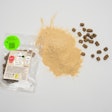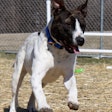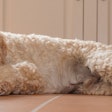
By definition, a color additive is any dye, pigment or other substance made or obtained from vegetable, animal, mineral or another source capable of coloring a food, drug, cosmetic or any part of the human body. US food regulations stipulate that colors added to petfoods must be of the same quality as those added to food for human consumption with few exceptions.
Soluble dyes have been extensively used in petfood applications because of their ease-of-use, range of colors available and GMP limitations. Natural colors have become an increasingly appealing option for petfood use as they can impart shades that may not be achieved with synthetic colors and make for a much more pet-parent-friendly label.
Natural colors are actually classified by the FDA as "exempt from certification" colors, according to Sensient Colors LLC, the world's largest color supplier. These colors come from a variety of sources, including seeds (annatto), roots (turmeric), vegetables (red cabbage color, beets), algae (Beta carotene), insects (carmine/cochineal) and fruits (grape color and skin extract), among others. There are 26 colorants permitted for food use, but many of these colors are restricted. Careful attention must be given to color choice so that only permitted colors are used for your specific petfood and treat applications.
While color is of little consequence to dogs and cats, pet parent consumers judge the quality and palatability of the food they buy largely by its appearance. Color is often added to ensure consistency and to minimize the impact of variable raw materials. The Color Group of Sensient Colors LLC has a global network of regulatory specialists, food scientists, chemists and nutritionists available to guide petfood and treat manufacturers through the selection and use of an optimized color system.
When choosing your color options for petfood, Sensient recommends deciding on the following for your formula:
- Desired shade;
- Physical and chemical properties of the petfood product;
- Processing conditions;
- Packaging requirements;
- Potential ingredient interactions; and
- Marketing, regulatory and labeling issues.
Natural Brown from Sensient is a new color platform that provides rich brown alternatives to caramel and certified colors while retaining a wide pH range of stability and can be used across all petfood applications. "Natural Brown extracted from natural vegetable juice sources delivers a clean label including 4-MeI free, cocoa and caramel color replacements," says Mike Geraghty, president. "Sensient's Natural Brown replicates the bold shades of certified colors and offers appealing natural colors ranging from buttery yellow brown to deep auburn, providing possibilities for every food and beverage." Natural Brown has multiple color delivery systems available to meet any production need, including liquid, powder and dispersion forms.
Many petfood manufacturers are advertising their products as preservative, color and additive-free. But since the appearance of a petfood product is very important in the purchase decision, clean label colorants are high in demand. This is a trend that Michael Scheinert, product manager at Sternchemie, can confirm: "As consumer health awareness grows, our customers are more and more interested in red palm oil." This natural, vitamin-rich oil can give petfoods a golden-yellow to orange-red color.
The oil is derived from the flesh of the palm fruits, whose high carotene content gives them an intensive red color. SternRed palm oil is refined by a patented physical process which produces a virgin palm oil that is free of chemical additives. Since the process takes place at low temperatures, the oil retains its high levels of carotenoids and vitamin E complexes, which also have a positive influence on the shelf life, says the company. This red palm oil is color and heat-stable, flavor-neutral, and can be used as a problem-free substitute for synthetic colorings like beta-carotene.
Sethness is the world's leading manufacturer of liquid and powdered Caramel Color for the petfood industry. Used in many types of petfoods, Sethness Caramel Color is available in a wide range of strengths and hues to achieve colors from light yellows to deep browns. From minimally processed Class I Caramel Colors to acid-stable Class IV Caramel Colors (for gravies and sauces), Sethness provides an extensive line of products to fit a variety of petfood application needs including Organic Caramel Colors and non-GMO Caramel Colors made from cane sugar. Sethness also offers clean label opportunities by reducing or replacing certain FD&C dyes in petfoods.
Some dry petfood manufacturers choose caramel color to reduce the use of synthetics. Caramel color alone can replace a combination of three certified colors-FD&C Red #40 (Allura), FD&C Yellow #6 (Sunset) and FD&C Blue #2-which blended together can make brown. The result is a product with a cleaner label and a meaty appearance, according to DDW Color. Using caramel to replace synthetics also solves a common problem in digestion that occurs when the body absorbs red colors, leaving the blue and yellow to show a "green effect" in pet stools.
D.D. Williamson's liquid and powdered caramel products range from pale yellow to reddish-brown to medium-brown to nearly black. In Europe and other regions, processors may use burnt sugar as a flavor that provides incidental coloring to petfoods. DDW also offers a full line of liquid and powdered burnt sugars.


















